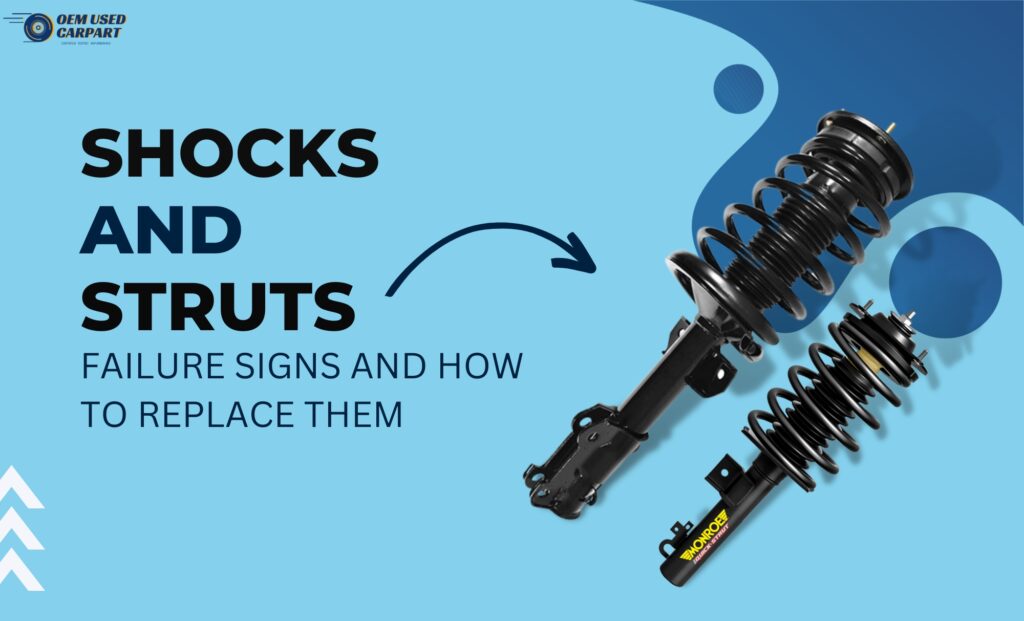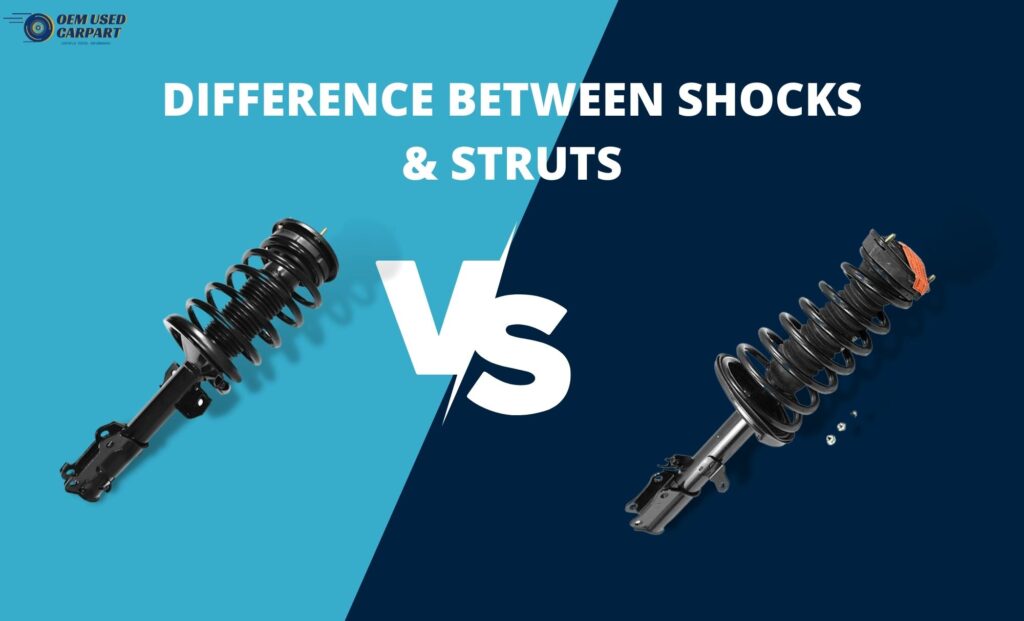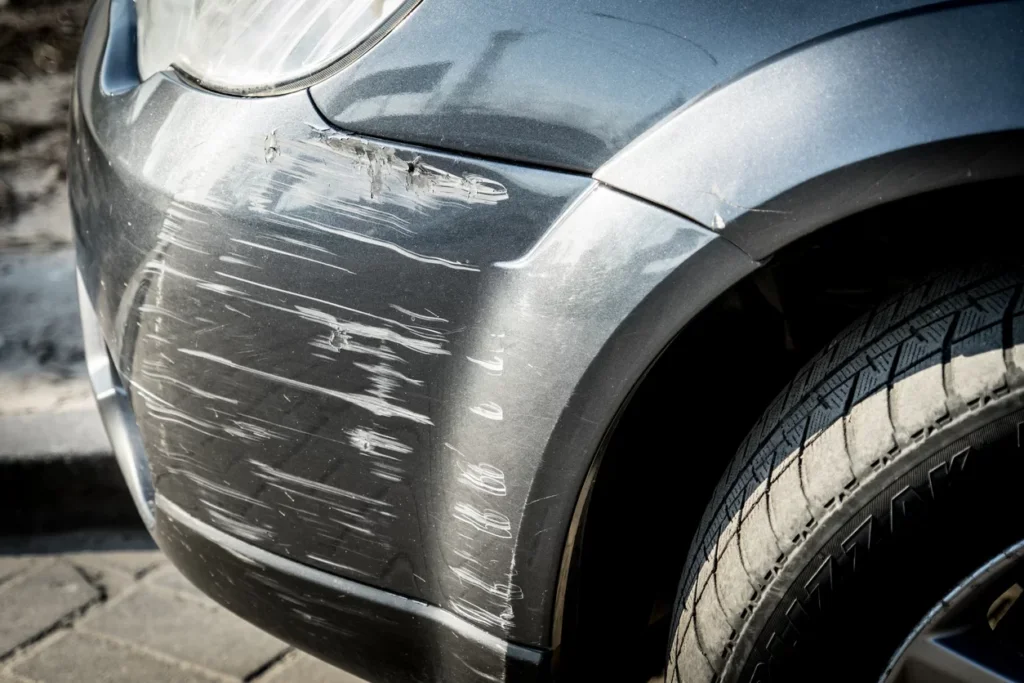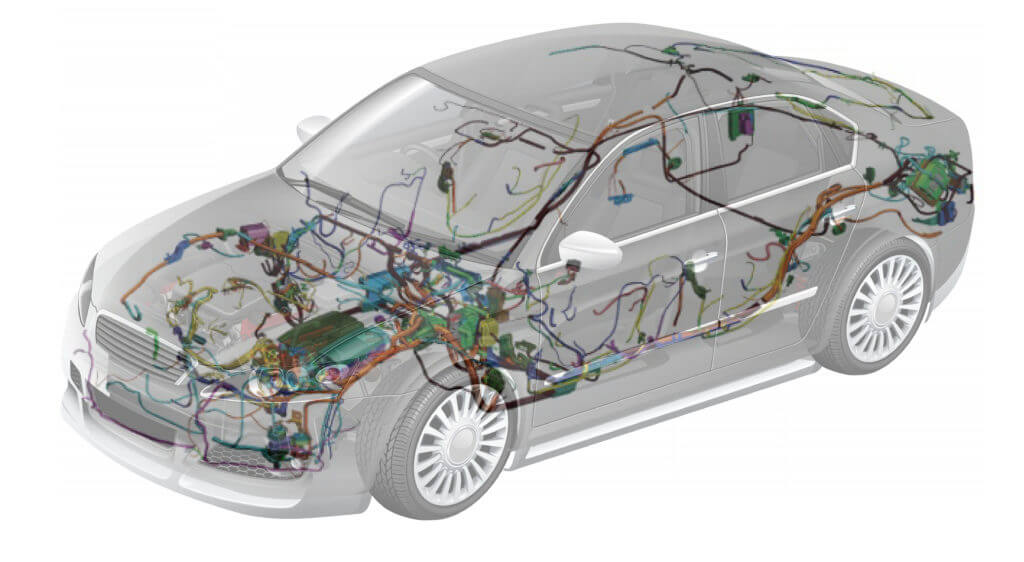The suspension system of your car is an important part when it comes to handling and safety. The key components of your suspension are Shock absorbers and struts. Shocks and struts not only protect the passengers from an uncomfortable ride, but they also keep tires in contact with the road. In the following blog, we will be discussing.
- Difference between shock absorbers and struts
- What are the symptoms of their failing?
- What is the replacement process?
- Cost of replacing them.
So, let’s get started.
Difference Between Shocks and Struts
Both are essential parts of the suspension system, but they play different roles. Many people use the terms “shocks” and “struts” interchangeably. However, they are not synonymous.
Each wheel on your car has either a shock or a strut. Some vehicles use shock absorbers on one axle and struts on the other. It’s critical to understand the distinction so you know what you’re up against when you crawl under the car.
Struts are integrated into the suspension system, whereas shock absorbers are not. Shock absorbers reduce bounce and provide stable handling of the vehicle. Struts also dampen the bounce effect but also provide structural support for the suspension. Struts play a key role in tire alignment.
How do Struts and Shocks Work?
When you look at your suspension system, there are multiple parts. It includes a set of shock absorbers, springs set, and a set of struts that support the springs. They all work together to lessen the bounce your car experiences from road surfaces by dampening the effect of shocks.
By converting kinetic energy into thermal energy with the help of hydraulic fluid, piston, and coil, shock absorbers disperse the disturbance. Struts assist the springs in supporting the weight of the vehicle while also assisting with vehicle control.
Without correctly functioning struts and shocks, a bumpy road can actually force a car’s wheels to bounce off the ground, which can quickly result in loss of control and accidents.
When to Replace Shocks and Struts?
Shocks and struts significantly contribute to the overall safety and stability of your vehicle’s steering and suspension. Therefore, it is strongly advised to service your shocks and struts more often. Here are the failing symptoms you can observe through visual inspection and while driving.

Visual Symptoms:
- Uneven tire wear.
- Shocks or struts exhibit fluid leakage symptoms.
- Bushings or mounts are fractured or rusted.
- Shock or strut bodies are dented.
Handling Symptoms:
- Your car is leaning to one side or the other.
- Poor steering response.
- The car seems highly unstable at high speeds.
- The car’s front end would dip considerably during braking.
- Excessive vehicle bouncing.
Although every car is unique, most mechanics advise having your shocks and struts checked as soon as there are any indications of possible deterioration. You should think about changing your shocks, struts, or both at least every 50,000–60,000 miles.
Shocks and Struts Replacement
Replacing struts and shocks is a very complex process, and it can be risky. It is the best practice to take your vehicle to a professional mechanic. However, here are the steps to replace them.
Get a Spring Compressor
You must exercise caution because this step is crucial to changing shocks and struts. Many automobiles have integrated springs inside them. So, if you remove them improperly, it could cause harm or damage to you and your car. In these situations, you’ll need a spring compressor to disassemble everything safely.
If you’re unsure about removing the springs, you should consider taking your car to a repair shop.
Raise the Vehicle from One Side
- Firstly, assemble all the necessary tools and parts.
- After that, you should use a car jack to raise your vehicle one side at a time.
- To maintain stability once it is upright, put a jack stand behind the front wheel.
Take Out the Old Shocks and Struts
- You must first remove the wheels.
- Next, using your spring compressor, search for the three bolts holding the shock or strut in place at the bottom.
- Lose these bolts but do not take them out totally.
- Another bolt inside the engine compartment secures the top of the shock or strut. To loosen it, use an impact wrench with a socket extension.
- Your shock or strut should come free once you’ve managed to get this loose and finished removing the other bolts.
Replace Them with New One
- Swap in the new shocks and struts after removing the old ones.
- Use a torque wrench to tighten all of the bolts.
Must Test Drive Your Car
Take the car for a test drive as soon as you finish putting everything back together. While driving, you can move the steering wheel to see how the car reacts. You’re good to go if the ride is smooth and turning isn’t a difficulty. However, you should get your car’s alignment checked by a professional after replacing the shocks and struts.
How Much Would It Cost to Replace?
The cost of changing both depends on the type of make and model of your drive. It also depends on the suspension system of your car. Firstly, there are different grades of shocks. There are heavy-duty shocks, oil-only shocks, and nitrogen-charged shocks. So, there can be high price fluctuations.
So, when you replace the shocks, it will cost around $300 to $600. The labor charges may vary from $100 to $350.
Struts are more expensive replacements. A pair of struts replacement costs between $500 and $1,200, including the price of wheel alignment. On the other hand, a single strut assembly ranges in price from $200 to $350. You can expect to pay between $150 and $300 for labor.
FAQs
Both shocks and struts deteriorate over time, and some signs suggest it could be time for replacement:
1. The feeling of swaying and rolling when driving through corners.
2. Dipping forward on stops.
3. Fluid leaks.
4. Premature tire tread degradation.
It will be possible to regain the vehicle’s handling and ride control by replacing the worn-out struts and shock absorbers. Your tire will have a longer life. With new shocks and struts, the potential wear of steering and suspension parts is heavily reduced.
Struts and Shock absorbers are distinct parts. So, if your car has struts in the front and shocks in the back, you can take off either the shocks or the struts. However, in modern cars, you will find a mix of both in the suspension systems. In those, you have to replace both.
Hydraulic shock absorbers reduce the amount of movement caused by the vehicle’s springs. These springs help to lessen some of the shocks caused by uneven or broken roadways.
Struts are structural parts of the steering and suspension systems. They are weight-bearing components and also assist in reducing bumps caused by moving vehicles and enhancing steering and alignment.













